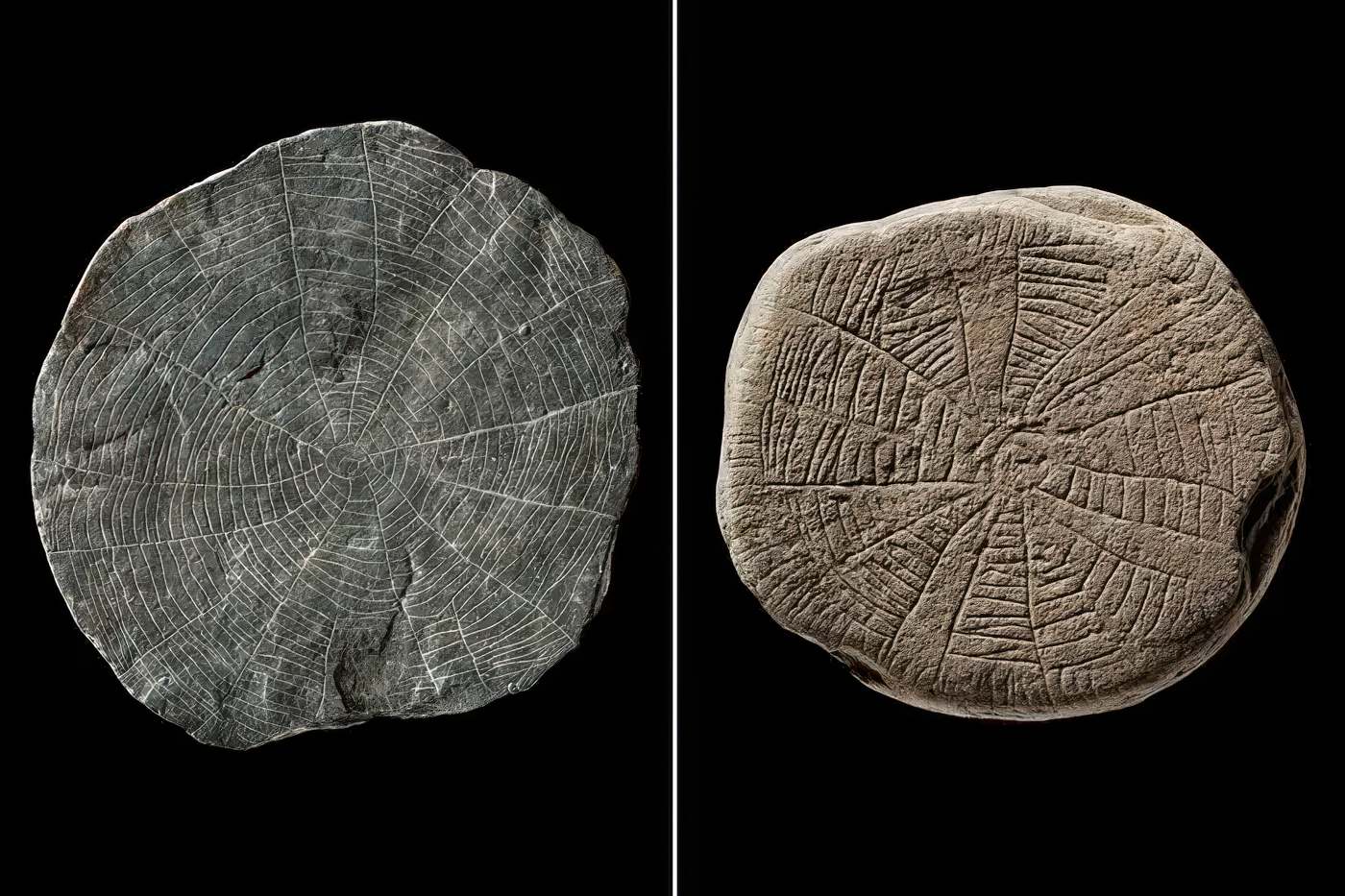Mysterious sun-engraved stones discovered on Denmark’s Bornholm island may have been ceremonial offerings to restore the sun after a devastating volcanic eruption.
Key Points at a Glance
- Archaeologists have unearthed 614 sun-engraved stones from a Neolithic site on Bornholm, Denmark, dating back approximately 4900 years.
- Ice core data reveals a major volcanic eruption around 2900 BC that likely caused severe climate cooling and crop failures.
- Burying the sun stones may have been a desperate ritual to appease deities or celebrate the return of sunlight after prolonged darkness.
- The findings highlight the ingenuity and resilience of Neolithic societies in adapting to catastrophic climate events.
Archaeologists working at Vasagård West on the Danish island of Bornholm have uncovered a trove of 614 stone plaques and fragments carved with images of the sun and plants. Dating back nearly 4900 years, these artifacts provide a unique glimpse into the rituals and beliefs of Neolithic farming communities. The plaques were found buried in ditches surrounding enclosures marked by earthworks, accompanied by pottery, animal bones, and other items from the late Funnel Beaker culture.
Initially, researchers believed these carvings were offerings to ensure good harvests, as the sun held central importance for agricultural societies in northern Europe. However, their discovery in a deliberate, large-scale deposition raised questions about the specific purpose of these rituals. Rune Iversen of the University of Copenhagen and his colleagues delved deeper, analyzing ice cores from Greenland and Antarctica for evidence of volcanic activity. Their findings suggest a massive eruption near the equator around 2900 BC, which dispersed ash clouds that blocked sunlight and caused significant global cooling.
The event would have had catastrophic effects on Neolithic communities in northern Europe. With reduced sunlight, temperatures plummeted, and crop failures ensued. This chain of events left these societies vulnerable, facing hunger and despair. “If you don’t have the harvest and you don’t get the crops in, you won’t have anything to sow next year,” Iversen explains. The prolonged hardship likely prompted the creation and ceremonial burial of the sun stones, which may have been intended to summon the sun’s return or celebrate its reappearance after the skies cleared.
The context of the stones’ burial is equally fascinating. They were placed in the ditches of earthwork enclosures, then covered with layers of stone pavement containing animal bones and pottery. This deliberate act suggests the event held profound symbolic significance for the people of the region. Jens Winther Johannsen of Roskilde Museum supports this interpretation, stating, “You can be sure die-hard farming societies have to trust in the sun.”
Notably, this unique behavior appears to be localized to Bornholm. Lars Larsson of Lund University in Sweden questions why similar evidence has not been found in other parts of southern Scandinavia if the volcanic event affected the broader region. Rune Iversen proposes that Bornholm’s abundance of hard slate stone made it possible to create durable carvings, while other regions with clay-based landscapes might have used perishable materials like wood or leather. These materials, unlike stone, would not have withstood the test of time.
Cultural isolation might also explain the distinct practices observed on Bornholm. As an island community, Neolithic societies there may have developed unique responses to the climate crisis. This isolated creativity is further reflected in the artistic motifs and methods used to carve the sun stones, which remain unparalleled in neighboring regions.
The implications of these findings are profound. They offer insights into how early societies coped with environmental disasters and underscore the critical role of cultural and spiritual practices in their resilience. The sun stones serve as a testament to the ingenuity of Neolithic people in facing adversity and their enduring connection to the natural world.
While much about these stones remains a mystery, their discovery enriches our understanding of ancient human responses to climate change. As researchers continue to investigate, the story of Bornholm’s Neolithic sun stones may shed light on broader patterns of human adaptation and cultural expression in the face of environmental crises.
